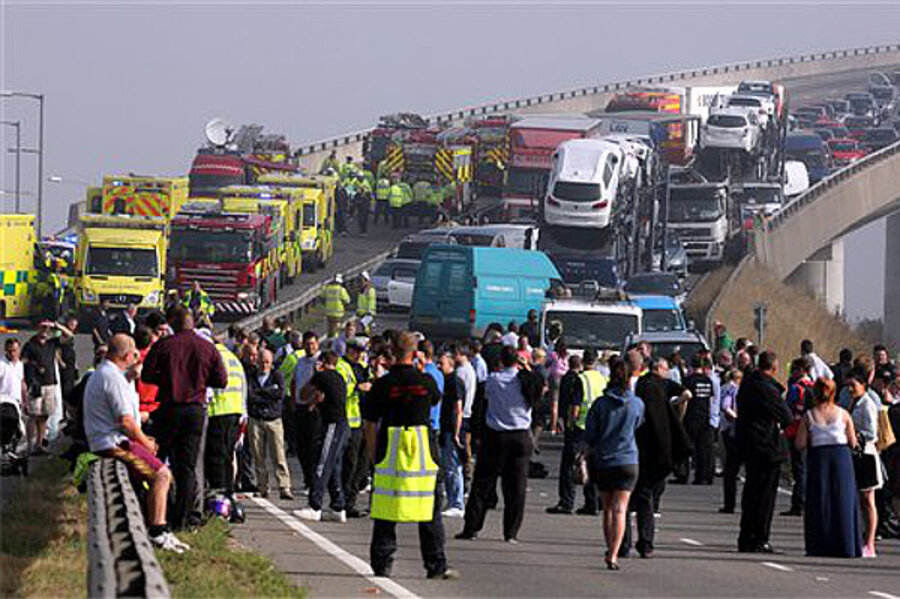100-vehicle crash: Was fog to blame?
Loading...
| LONDON
Dozens of people were hurt, some seriously, when more than 100 cars were caught up in a huge pile-up on a bridge east of London during foggy conditions on Thursday morning.
Witnesses said there was thick fog at the Crossing, a road bridge which links the Isle of Sheppey in the mouth of the River Thames estuary to the mainland about 50 miles east of London. Witnesses put visibility at 20 yards.
Kent Fire & Rescue Service says hydraulic cutting equipment was needed to free six people injured in the pileup that took place on New Kingsferry Bridge in Sheppey, which is located in the southeast English county of Kent.
Kent Police said there were reports of at least eight serious injuries and 60 minor injuries. South East Coast Ambulance Service says that by midday it had transported 35 patients to six hospitals.
The accident began at about 7:15 a.m. and continued on for 10 minutes as cars and trucks slammed into each other. "All we could hear was screeching, cars thudding into each other, lorries crashing," driver Martin Stammers told the BBC.
Police said they were still investigating the cause of the accident.
(Writing by Michael Holden; Editing by Andrew Heavens)







